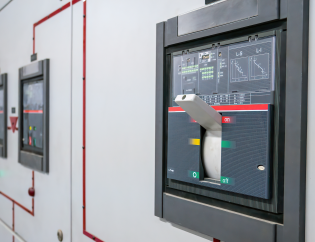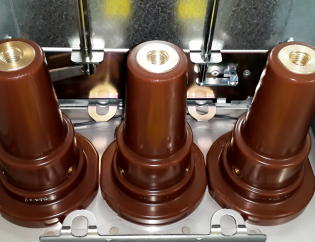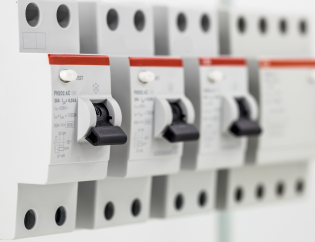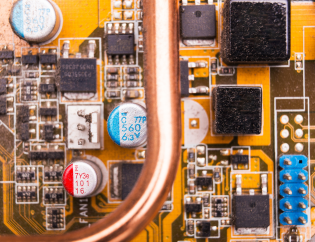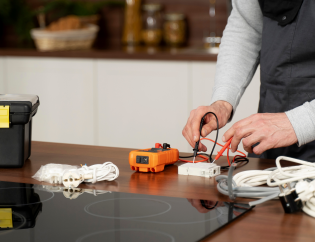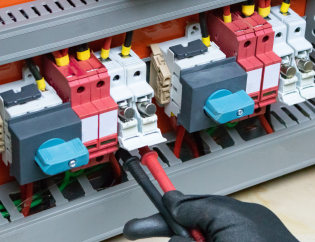RCDs are also important for protecting electrical equipment from damage caused by electrical faults. They can help prevent electrical fires, which significantly cause property damage and loss of life.
What is a Residual Current Device (RCD)
A Residual Current Device (RCD) is a type of safety device used in electrical systems to protect against electrocution and shock. If an electrical fault occurs, such as a person coming into contact with an electrified conductor, the residual current will increase. The RCD will quickly switch off the electricity supply to the circuit in response to the increased residual current, reducing the risk of electrical shock or electrocution.
RCDs are commonly used in homes, offices, and industrial settings where electrical safety is a concern. They are particularly useful in damp environments, such as bathrooms and kitchens, where the risk of electrical shock increases. Electrical safety codes and regulations in many countries require the use of RCDs.
How Does a Residual Current Device Work
A Residual Current Device (RCD) works by continuously monitoring the current flow in an electrical circuit and detecting any imbalance between the current flowing out of the circuit and the current returning to the circuit.
The RCD is connected in series with the electrical circuit and measures the residual current, which is the difference between the current flowing out of the circuit and the current returning to the circuit. In a normal functioning electrical circuit, the residual current should be zero. If an electrical fault occurs, such as a person coming into contact with an electrified conductor, the residual current will increase.
When the residual current exceeds a predetermined threshold, the RCD will quickly switch off the electricity supply to the circuit. This is done in milliseconds, reducing the risk of electrical shock or electrocution.
The RCD operates by using a tripping mechanism triggered by the residual current. The tripping mechanism consists of a coil and a magnetic circuit. When the residual current increases, it generates a magnetic field in the coil, which operates the tripping mechanism and switches off the electricity supply to the circuit.
Types of Residual Current Devices (RCD)
There are several types of Residual Current Devices (RCDs), including:
1. Active RCD
This type of RCD operates by continuously monitoring the flow of current in the electrical circuit and switching off the electricity supply in the event of an electrical fault. Active RCDs are typically used in domestic and light commercial applications.
2. Passive RCD
This RCD does not continuously monitor the current flow in the electrical circuit. Instead, it operates in the event of an electrical fault, such as a power surge, and switches off the electricity supply. Passive RCDs are typically used in industrial applications where high levels of protection are required.
3. Differential RCD
This type of RCD operates by monitoring the residual current, which is the difference between the current flowing out of the electrical circuit and the current returning to the circuit. Differential RCDs are designed to provide a high level of protection against electrical faults and are commonly used in commercial and industrial applications.
4. Portable RCD
This type of RCD is designed to be portable and can be plugged into an electrical socket to provide additional protection against electrical shock and electrocution. Portable RCDs are typically used in outdoor and recreational applications, such as camping and boating.
5. Residual Current Circuit Breaker with Overload Protection (RCCB)
This type of RCD combines the functions of a residual current device with those of an overcurrent protection device. It provides protection against electrical faults and overloading of the electrical circuit.
How Do You Test RCDs
Testing a Residual Current Device (RCD) is important to ensure that it functions properly and provides adequate protection against electrical shock and electrocution. There are several methods for testing RCDs, including:
- Push-button test: This simple test can be performed using a push-button test feature on the RCD. The push-button test simulates an electrical fault by briefly increasing the residual current in the circuit and triggering the tripping mechanism. If the RCD is functioning properly, it should switch off the electricity supply to the circuit.
- Portable RCD tester: This portable device can be used to test RCDs. The tester is connected to the RCD and simulates an electrical fault, causing the RCD to switch off the electricity supply to the circuit. The tester will indicate whether the RCD is functioning properly.
- Multifunctional tester: This device can be used to test RCDs and other electrical safety devices, such as circuit breakers and earth leakage protection devices. The multifunctional tester is connected to the RCD and simulates an electrical fault, causing the RCD to switch off the electricity supply to the circuit. The tester will indicate whether the RCD is functioning properly.
It is important to note that RCDs should be tested regularly to ensure they function properly. The frequency of testing depends on the type of RCD and the type of application in which it is used. For example, RCDs in domestic and light commercial applications should be tested at least once a year, while RCDs in heavy commercial and industrial applications may need to be tested more frequently.
Conclusion
In conclusion, Residual Current Devices (RCDs) are an important aspect of electrical safety and are designed to protect against electrical shock and electrocution. RCDs work by continuously monitoring the flow of current in the electrical circuit and switching off the electricity supply in the event of an electrical fault. Several RCDs are available, including active RCD, passive RCD, differential RCD, portable RCD, and residual current circuit breakers with overload protection (RCCB). The appropriate type of RCD depends on the level of protection required and the type of electrical system used.
Regular testing of RCDs is important to ensure that they function properly and provide adequate protection against electrical shock and electrocution. There are several methods for testing RCDs, including push-button tests, portable RCD testers, and multifunctional testers. The frequency of testing depends on the type of RCD and the type of application in which it is used.
Ensure the safety of your industrial operations and protect your workers from electrical hazards by installing Residual Current Devices (RCDs) from ECSKSA. Get in touch with us today to upgrade your electrical safety.
FAQs
1. What is the trip time of an RCD?
The trip time of an RCD refers to the amount of time it takes for the RCD to switch off the supply of electricity in the event of an electrical fault. The trip time of an RCD is typically 30 milliseconds or less.
2. Can an RCD protect against indirect contact?
Yes, an RCD can protect against indirect contact when a person comes into contact with an electrical source through a conductor such as a metal object. An RCD will switch off the electricity supply in the event of an electrical fault, even if the person is not directly touching the live conductor.
3. Can RCDs be reset after they have tripped?
Yes, RCDs can be reset after they have tripped. To reset an RCD, switch it off and then switch it back on. However, if an RCD trips frequently, it is important to investigate the cause of the problem and resolve it to ensure that the RCD is functioning properly and providing adequate protection against electrical shock and electrocution.
Do you have a question in your mind? If so, make sure to fill out the form below!




